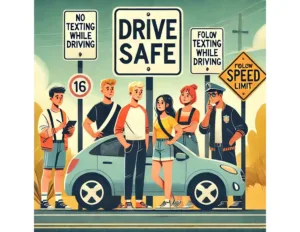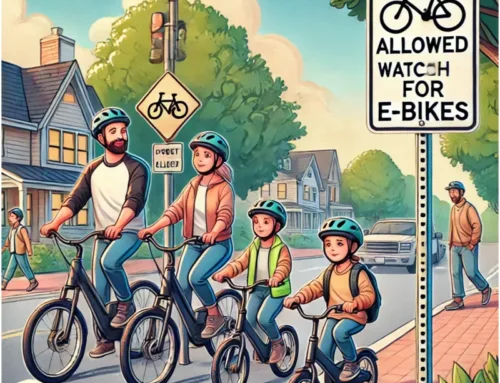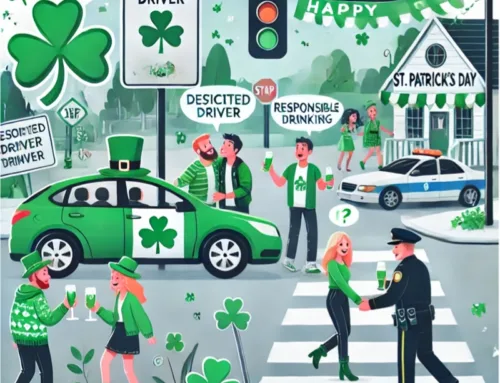Teen Driver Safety Week is a vital initiative aimed at raising awareness about the unique challenges and risks teen drivers face on the road. Taking place from October 20–26, 2024, this week serves as a reminder to both teens and their parents of the importance of responsible driving. Inexperience behind the wheel, combined with risky behaviors, can lead to fatal accidents. This article will explore key factors contributing to teen driving accidents and provide strategies to promote safer driving habits.
 Why Teen Driver Safety Matters
Why Teen Driver Safety Matters
Motor vehicle crashes remain one of the leading causes of death for teenagers in the United States. According to the NHTSA, nearly 2,514 people died in crashes involving a teen driver in 2022. Out of these, 811 fatalities were the teen drivers themselves. This stark statistic highlights the need for increased safety awareness and proactive measures during Teen Driver Safety Week.
Teenagers, due to their inexperience and susceptibility to distractions, are at higher risk for accidents. Understanding the risk factors can help teens and their parents take steps to prevent accidents.
Key Risk Factors for Teen Drivers
The following are some of the primary risk factors contributing to teen driver accidents:
- Distracted Driving: Teens are more likely to use their phones while driving, whether texting, using apps, or checking social media. Distracted driving is a leading cause of crashes among teen drivers.
- Speeding: Many teens underestimate the dangers of speeding. Speed-related crashes account for nearly one-third of all fatal crashes involving teenagers.
- Driving Under the Influence: Although illegal, a significant percentage of teen drivers admit to driving under the influence of alcohol or drugs, further increasing the risk of fatal accidents.
- Lack of Seat Belt Use: According to the NHTSA, over 40% of teens who died in crashes in 2022 were not wearing a seat belt at the time of the accident. Encouraging consistent seat belt use can save lives.
- Night Driving: Driving after dark significantly increases the likelihood of an accident, especially for teens with limited nighttime driving experience.
- Additional Passengers: Having friends in the car can create distractions, which raise the chances of a crash.
Strategies for Keeping Teen Drivers Safe
To combat these risk factors, parents and teens should work together to create safer driving habits. Here are some actionable steps to improve teen driver safety:
- Set Clear Rules: Parents should establish driving rules that include no phone use, no speeding, and the consistent use of seat belts.
- Practice Supervised Driving: Driving with a parent or guardian can help teens gain more experience behind the wheel and develop better judgment in different driving conditions.
- Limit Night Driving: Restricting nighttime driving, especially during the first year a teen has their license, can reduce the risk of accidents.
- Encourage Defensive Driving: Teens should be taught to drive defensively, always anticipating what other drivers may do, and keeping a safe distance from other vehicles.
- Educate on the Dangers of Impaired Driving: Talking openly about the dangers of driving under the influence can help teens make better decisions.
- Gradually Increase Driving Responsibilities: Start with short, supervised trips and slowly increase driving responsibilities as your teen gains more confidence and skill.
Importance of Parental Involvement
Parents play a crucial role in guiding teens through the early stages of driving. By maintaining open communication, modeling safe driving behaviors, and setting boundaries, parents can help their teens develop lifelong safe driving habits. According to a study by the CDC, teens who had parents involved in their driving education were less likely to engage in risky driving behaviors.
Consider these tips to be actively involved in your teen’s driving education:
- Discuss Expectations: Have regular discussions about driving rules and the consequences of breaking them.
- Monitor Driving Habits: Consider using apps or devices that monitor your teen’s driving speed and behavior.
- Reinforce Positive Behavior: Acknowledge and reward your teen for following the rules and practicing safe driving habits.
Programs and Resources for Teen Drivers
During Teen Driver Safety Week, various programs are available to help teens improve their driving skills. Driver’s education courses, defensive driving programs, and online resources can offer additional training and support. Local community groups and schools may also host events focused on teen driver safety. Engaging in these programs can be an excellent way for teens to sharpen their skills and stay safe on the road.
Looking Ahead: Keeping Teen Drivers Safe Year-Round
While Teen Driver Safety Week brings much-needed attention to the issue, teen driving safety should be a year-round priority. The statistics are clear: teens are at higher risk for accidents, but with the right support, education, and habits, these risks can be mitigated. Parents, schools, and communities must work together to promote a culture of safety, ensuring teens understand the responsibility that comes with driving.
Call us today at 908.264.7701 to learn more about how we can help ensure your teen is driving safely and responsibly.







